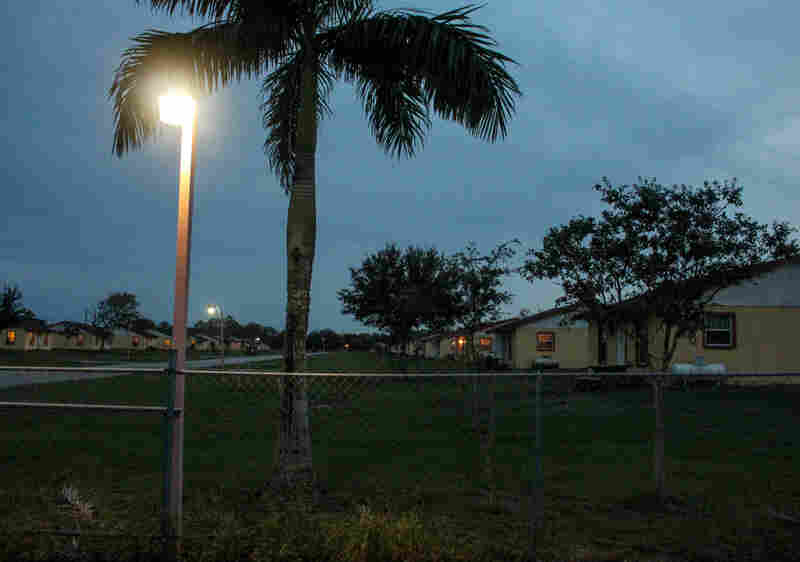The Affordable Care Act replacement plan championed by President Trump would hurt low-income people in rural areas that voted heavily for the Republican last fall, according to an NPR analysis of data on proposed subsidy changes from the Kaiser Family Foundation.
The new changes in tax credits and subsidies for older Americans are a big reason many Republicans are hesitant to get behind the American Health Care Act, which is set for a vote in the House on Thursday.
A major component of the Affordable Care Act, subsidies helped lower- and middle-income people offset the cost of the health care premiums.
If the new GOP replacement plan does pass — which is still very much in up in the air — the bill would still face substantial hurdles in the Senate. Maine Republican Sen. Susan Collins articulated her opposition to the bill in its current form Sunday on NBC’s Meet the Press, citing how it “disproportionately affects older rural Americans.”
In an effort to woo reluctant members, one of the amendments announced on Monday evening by House leaders would give the Senate the opportunity to give more tax credits to people aged 50 to 64. However, there’s no requirement to make that happen once it passes over to the Senate.
Still, as the Congressional Budget Office also found, it’s older, poorer people who would see some of the largest reduction in both cost and coverage.
And they’re also largely in rural areas and smaller counties that voted overwhelmingly for Trump. According to NPR’s analysis of the 2016 election results, Trump won 68.5 percent of the vote in rural counties, and he also carried smaller counties with a similar 63.4 percent of the vote. That’s based on classifications by the U.S. Department of Agriculture that factors in both their level of urbanization and their proximity to metro areas; the groupings of rural counties and small counties are reliant on the degree of urbanization in the county.
But in major metropolitan areas, Trump only got 44 percent of the vote compared to Clinton’s majority.
And ultimately it’s those major metro areas that would see some of the smallest changes to the health care subsidies they’re receiving. For example, both 27-year-olds and 40-year-olds making $20,000 per year would only see a drop in their subsidies by about $1,000. However, 60-year-olds in metro areas in that same income bracket would see their subsidies decrease by almost $5,000.
But 27- and 40-year-olds in higher income brackets from $40,000 to $75,000 a year would actually see an uptick in their subsidies, ranging from $1,500 to $3,000. In 60-year-olds, though, only those making $75,000 a year would see an increase in subsidies of about $4,000. Sixty-year-olds in other income groups would see a dip.
In the more Trump-friendly areas, those differences are far more pronounced. In rural counties, a 60-year-old who makes just $20,000 a year would see their subsidies drop by $6,700. Only a 60-year-old who makes $75,000 or more a year would see an uptick. However, 27- and 40-year-olds who make at least $40,000 a year in rural areas would see an increase in subsidies, ranging from just over $1,000 to $3,000 more for a 40-year-old who makes $75,000. Smaller counties would also see similar changes.
Why the change in different areas around the country? The major reason seems to be because, unlike the Affordable Care Act, the Republican bill does not take the local cost of insurance into account — usually much higher in rural areas — and doesn’t increase the subsidies if local insurance premiums rise. And credits are the same across the board regardless of income.
Overall, though, despite the fact that premiums are typically higher in rural areas, people in metro areas would be less affected by the potential subsidy changes. For a 40-year-old who makes $30,000 a year, subsidies would drop in rural and small areas, but there’s about a $1,016 difference between rural areas and metro areas, where 40-year-olds in that income bracket would see an increase. Ultimately, the discrepancies between rural and metro areas only begins to close in higher income brackets.
Trump has traveled over the past week to some of the areas that might be most adversely affected by the bill, though both in Nashville, Tenn., and Louisville, Ky., his lobbying at the campaign rallies he held was not that pronounced. And many of the conservative members who are on the fence about the bill come from rural areas or small towns — that went heavily for Trump.
But even if the law does pass and these changes go into effect, it’s unclear if once-loyal voters would turn on Trump or even place the blame with him. A telling anecdote from the Washington Post‘s Jenna Johnson covering Trump’s rally last week was a woman who praised Trump for lowering her son’s premiums by almost $500 since he took office. However, those changes were due to the Affordable Care Act, not anything enacted by Trump in the two months since he took office.
Methodology
Kaiser Family Foundation estimated differences in federal subsidies under the proposed Republican plan in 2020 at the county level. A caveat: Kaiser’s analysis at the $20,000 income level excludes Alaska, Minnesota, New York and Washington, D.C. In 2020, those residents would be eligible for Medicaid (Alaska and Washington, D.C.) or the Basic Health Program (Minnesota and New York).
We grouped each county into one of three groups based on its USDA Rural-Urban Continuum Code. Metro counties had a code between 1 and 3, small-town counties had a code between 4 and 7, rural counties had a code of either 8 or 9.
Election results data came from the Associated Press. These results were last updated on Nov. 28, 2016, and are not the final certified results. The average vote calculations for rural, smaller and metro counties do not include Alaska, as the AP does not report election results on the county level in Alaska.
We calculated an average value for each county grouping, weighted by population. For each county, we multiplied the county’s dollar difference for each age and income bracket by the county’s population (according to 2015 American Community Survey 5-Year data) to create a weighted score. Then, for each county grouping (metro, small town, metro), we summed the weighted scores for each age and income bracket and divided it by the summed population of those county groupings.
Let’s block ads! (Why?)









